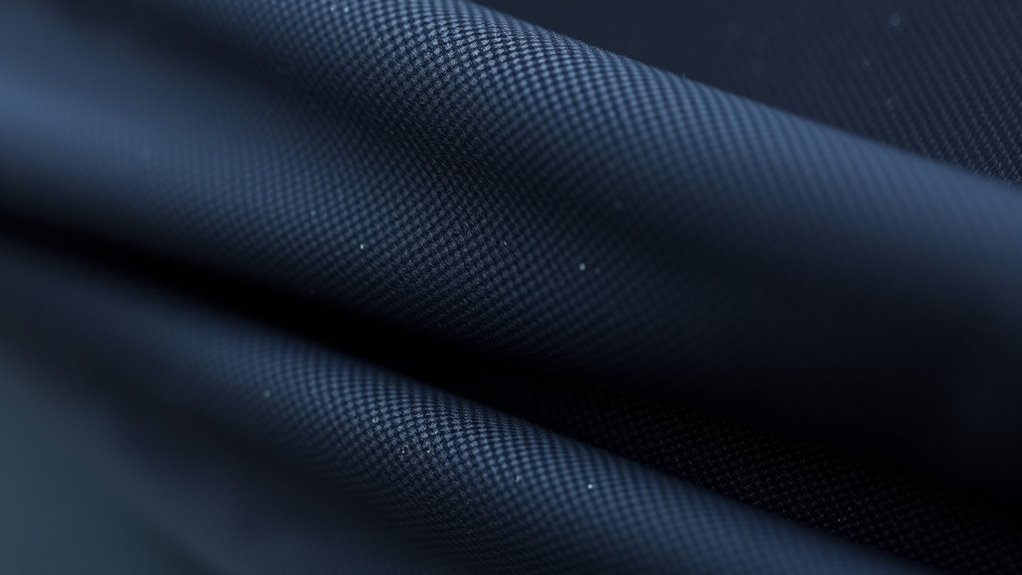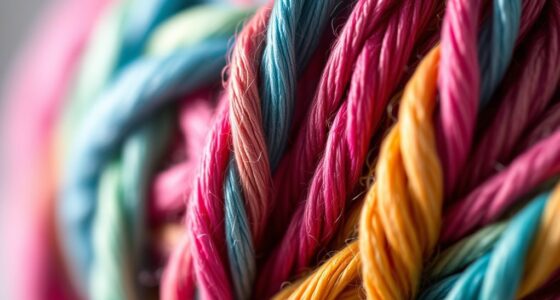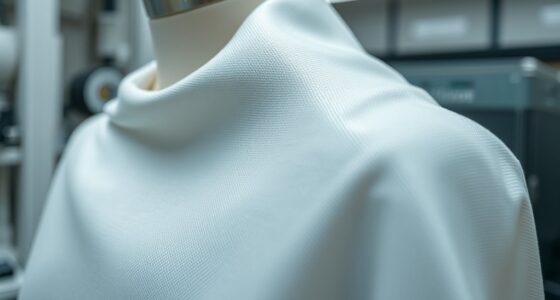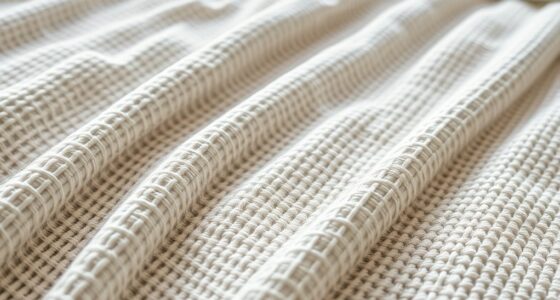Antimicrobial fabric finishes are often marketed as solutions to make textiles safer and odor-free, but it’s important to differentiate hype from science. While some finishes, like silver or copper nanoparticles, can be effective and long-lasting, concerns about environmental impact and actual efficacy persist. Not all products deliver the claimed benefits, and some use buzzwords without supporting proof. If you want to understand what truly works and what’s marketing, there’s more to uncover behind the claims.
Key Takeaways
- Not all antimicrobial finishes are equally effective; verify claims with scientific evidence and certifications.
- Nanotechnology-based antimicrobials may offer durable protection but can raise environmental and health concerns.
- Eco-friendly alternatives, like natural plant extracts, are emerging as sustainable options with proven efficacy.
- Marketing often exaggerates antimicrobial longevity; actual performance depends on fabric type, washing, and finish quality.
- Consumers should consider the lifecycle impact of finishes, including production, use, and disposal, when evaluating claims.
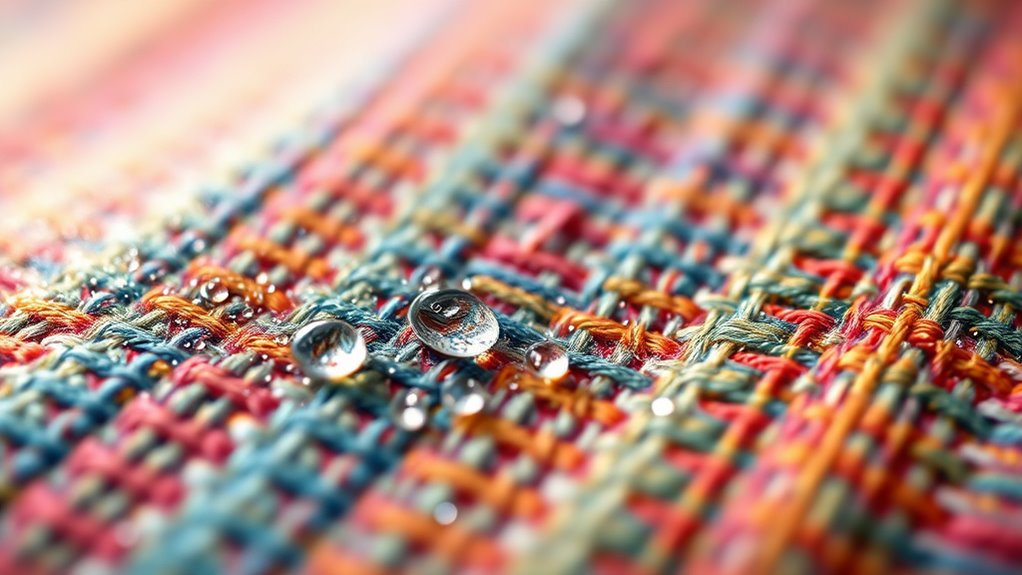
Antimicrobial fabric finishes are essential in enhancing textile safety by inhibiting the growth of bacteria, fungi, and other microbes on fabric surfaces. These finishes help prevent odors, deterioration, and potential health risks associated with microbial buildup. As you explore different antimicrobial solutions, you’ll notice a growing trend: the integration of nanotechnology. Nanotechnology integration involves embedding tiny particles, often metals like silver or copper, into fabric fibers. These nanoparticles are so small that they can effectively target microbes at the cellular level, providing a more durable and potent antimicrobial effect. This technology promises longer-lasting protection, even after repeated washings, which is a key selling point for many manufacturers. However, with the rise of nanotechnology integration, concerns about environmental impact also come into focus. The tiny particles used in these finishes can potentially leach out during washing or disposal, entering water systems and affecting ecosystems. You should be aware that nanoparticles, especially heavy metals, can accumulate in aquatic life, posing risks to wildlife and human health over time. This has led to increased scrutiny from environmental agencies and calls for more sustainable, eco-friendly antimicrobial solutions. While nanotechnology offers impressive antimicrobial benefits, it’s crucial to weigh these advantages against the potential environmental consequences. Manufacturers are now exploring biodegradable or naturally derived antimicrobial agents to mitigate these concerns, aiming for solutions that balance efficacy with ecological responsibility. Additionally, advances in AI security are enabling better monitoring and regulation of nanoparticle release, helping to ensure safer product development. Understanding the balance between technological innovation and environmental stewardship is vital when considering antimicrobial fabric finishes. Not all nanotechnology-based finishes are created equal; some may have minimal environmental footprints, while others could pose significant risks. As a consumer or industry professional, you should question the lifecycle impact of these finishes—from production to disposal—and seek out products that prioritize sustainability. The industry is increasingly moving toward eco-conscious formulations that leverage natural antimicrobial agents like plant extracts, which can offer similar benefits without the environmental baggage associated with nanoparticles.
Frequently Asked Questions
Are Antimicrobial Finishes Safe for Sensitive Skin?
You might wonder if antimicrobial finishes are safe for sensitive skin. While they’re designed to reduce bacteria, some finishes can cause skin irritation or allergic reactions, especially if you have sensitive skin. It’s essential to check product labels for hypoallergenic options and test a small area first. If you experience redness or itching, avoid fabrics with these finishes. Always consult a dermatologist for personalized advice on sensitive skin concerns.
How Long Do Antimicrobial Properties Last on Fabrics?
Imagine antimicrobial properties lasting a lifetime! In reality, their durability varies widely—most last from a few washes to a year, depending on chemical stability and fabric type. You should know that over time, exposure to washing, sunlight, and wear weakens these finishes. So, while they offer some protection initially, expect their longevity to be limited, and reapplication might be necessary to keep your fabrics fresh and safe longer.
Do Antimicrobial Fabrics Require Special Care or Cleaning?
You should follow specific cleaning methods for antimicrobial fabrics to maintain their fabric longevity. Regular washing with mild detergent helps preserve their antimicrobial properties, but avoid harsh chemicals or high heat, as these can degrade the finish. Always check manufacturer instructions, as improper cleaning might reduce effectiveness over time. Proper care guarantees your antimicrobial fabrics stay effective longer and look good, extending their lifespan and keeping them hygienic.
Can Antimicrobial Finishes Cause Environmental Harm?
You might wonder if antimicrobial finishes cause environmental harm. They can, especially if they contain chemicals that leach into water or soil, impacting ecosystems. However, eco-friendly alternatives exist, like natural antimicrobial agents, which reduce environmental impact. To minimize harm, choose fabrics with sustainable finishes and support brands focused on eco-conscious practices. Being aware helps you make better choices for both your health and the planet.
Are All Antimicrobial Fabrics Equally Effective Against Bacteria?
Did you know that not all antimicrobial fabrics provide the same level of protection? You might expect uniform effectiveness, but fabric durability and manufacturing processes vary widely. Some finishes might last through multiple washes, while others fade quickly. Always check product details—some fabrics are engineered with specialized agents for better bacteria resistance. Remember, effectiveness depends on the fabric’s treatment and how it’s manufactured, so don’t assume all antimicrobial fabrics are equally reliable.
Conclusion
Remember, not all that glitters is gold. While antimicrobial finishes can help reduce microbes, they aren’t a silver bullet for all hygiene concerns. Do your research, ask tough questions, and don’t be swayed by marketing hype. Stay informed and critical—because in the world of textiles, knowledge is your best defense. As the saying goes, “Trust but verify,” especially when it comes to claims about fabric protection.

